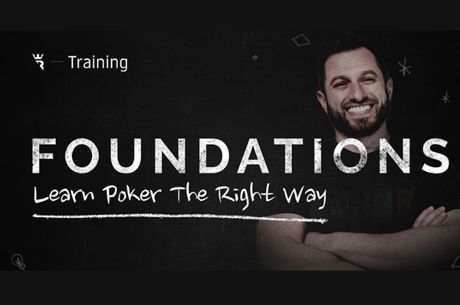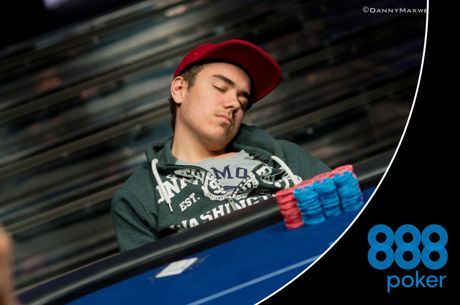Heads up play Poker Strategy

Heads up play poker strategy has become an increasingly popular option in recent years, mainly thanks to the internet where sites like PokerStars offer heads up sit'n'gos with buyins from $1 to $5000. But this is not the whole story as heads up play is also enormous fun and a great way of honing your skills. In short this is because there's nowhere to hide - you're paying blinds every hand, and so if you wait for aces you'll end up anteing away. J4o, A2, K3, the chances are that you'll be taking flops with these hands (unless there's a decent raise to you), raising with anything playable and only throwing away the real garbage like 53o or 72o. So bluffing, reading your opponent and post flop play all become of paramount importance.
The other defining element to heads up play is position, which is absolutely key in no-limit games (we'll cover limit later), just as important as the serve in tennis for example. Because the button traditionally posts the small blind in this format, and therefore acts first before the flop but last after it, they have both the opportunity to take the lead in a pot and go on to pressurise with it post flop.
In short, you therefore want to be playing the majority of your attacking poker from it, and the majority of your defensive poker when you are off it. How exactly you do this depends on the blinds as if you are near the end of the tournament and the blinds are sky high you stand a greater risk of getting caught in either position remember, the button's main advantage is that there are three rounds of betting after the flop, which means if you wish you can fire all three barrels at an opponent, essentially putting most of their stack on the line.
Working from this paradigm is the first step to success in heads up play, but after that a lot depends on your opponents. Fortunately if you follow the formula of constantly attacking from the button (unless you run into resistance) and defending off it (unless you have a monster) you'll soon find out what your opponents are made off and see how their game contrasts with yours. If you find them using the same strategy the chances are that you'll end up in a long battle of attrition where neither of you will give an inch and either the blinds will get huge or the battle will be won and lost over a few big pots.
If however you keep running into conflicts in the early stages then the chances are that you have exposed some kind of weakness in their play for example do they frequently call raises or check-raise out of position, thereby making themselves vulnerable, or do they play passively from the button allowing you to take a few more liberties? Do they bluff too much or too little, or always respond to your play in certain ways? Do they raise too much or too little, letting you into hands or ruining the dynamics of their game?
All of these are weaknesses you can look to exploit through the course of the game, and you should of course adjust accordingly to them poker is not a macho battle of egos and who can make the most dangerous moves, but a simple question of who gets the chips in the end. As ever, in no-limit it's the one big mistake that will cost you everything as opposed to the dozens of little ones, so watch out and make sure its your opponent making it, not you the chances are that it will be related to a strategy error like the ones above (providing your general poker is sound) so take care to analyse them in both yourself and your opponents.
Limit holdem is a slightly different beast played heads up, in which position plays a lesser role although it is still important. Essentially what it comes down to is a pure psychological war of aggression you should raise from the button with any hand you play and more often than not follow it to the river if you have any part of the board, trying to get in every extra bet possible when you believe you're in front. In limit holdem then, by contrast with no limit, and you can make a few big mistakes (in fact they can sometimes work to your favour if you appear almost unbluffable) but you can't afford to make a lot of small ones, as these are what will kill you in the end.
High limit players, in particular, are hyper aggressive in this format, often raising and reraising pre-flop with hands that don't merit it just to confound their opponent, and trying to seize the initiative by denting their overall strategy. Also, whereas in no-limit prolonged battles are rare as there will eventually be a decisive winner, in limit they can go on for hours and days, as the luck factor swings backwards and forwards and the winner in the end comes down to who is psychologically tougher in withstanding the swings of fortune and the mental strain of such sessions.
If the latter sounds a little too much for you though, why not start with just a few small no limit sitngos where things will reach a natural conclusion sooner or later, and you can start to think about your post flop play in other formats if you're too timid, wild or passive playing a few heads up matches is certain to be a wake up call to it and an opportunity to fix a leak in a short time that otherwise might take years to discover in a ring game format.








